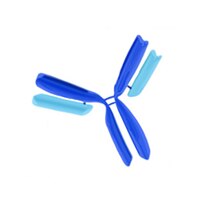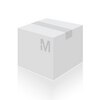GF39 Sigma-AldrichAnti-HGF (Scatter Factor) (Ab-1) Mouse mAb (4C12.1)
Anti-HGF (Scatter Factor) (Ab-1), mouse monoclonal, clone 4C12.1, recognizes the ~82 kDa hepatocyte growth factor in macrophages, endothelial & Kupffer cells. It is validated for use in WB & IP.
More>> Anti-HGF (Scatter Factor) (Ab-1), mouse monoclonal, clone 4C12.1, recognizes the ~82 kDa hepatocyte growth factor in macrophages, endothelial & Kupffer cells. It is validated for use in WB & IP. Less<<Synonyme: Anti-SF, Anti-Hepatopoeitin A, Anti-Scatter Factor, Anti-Hepatocyte Growth Factor
Empfohlene Produkte
Übersicht
| Replacement Information |
|---|
Key Spec Table
| Species Reactivity | Host | Antibody Type |
|---|---|---|
| H | M | Monoclonal Antibody |
Preis & Verfügbarkeit
| Bestellnummer | Verfügbarkeit | Verpackung | St./Pkg. | Preis | Menge | |
|---|---|---|---|---|---|---|
| GF39-100UG |
|
Kst.-Ampulle | 100 μg |
|
— |
| Product Information | |
|---|---|
| Form | Liquid |
| Formulation | In 10 mM PBS, 0.2% BSA, pH 7.4. |
| Positive control | Endothelial cells, Kupffer cells, or macrophages |
| Preservative | ≤0.1% sodium azide |
| Quality Segment | MQ100 |
| Physicochemical Information |
|---|
| Dimensions |
|---|
| Materials Information |
|---|
| Toxicological Information |
|---|
| Safety Information according to GHS |
|---|
| Safety Information |
|---|
| Product Usage Statements |
|---|
| Packaging Information |
|---|
| Transport Information |
|---|
| Supplemental Information |
|---|
| Specifications |
|---|
| Global Trade ITEM Number | |
|---|---|
| Bestellnummer | GTIN |
| GF39-100UG | 04055977220131 |
Documentation
Anti-HGF (Scatter Factor) (Ab-1) Mouse mAb (4C12.1) SDB
| Titel |
|---|
Anti-HGF (Scatter Factor) (Ab-1) Mouse mAb (4C12.1) Analysenzertifikate
| Titel | Chargennummer |
|---|---|
| GF39 |
Literatur
| Übersicht |
|---|
| Toi, M., et al. 1998. Clin. Cancer Res. 4, 659. Bardelli, A. and Comoglio, P.M. 1997. Ciba Found. Symp. 212, 133. Birchmeier, C., et al. 1997. Ciba Found. Symp. 212, 16. Jiang, W.G. and Hiscox, S. 1997. Histol. Histopathol. 12, 537. Matsumoto, K. and Nakamura, T. 1997. Ciba Found. Symp. 212, 198. Rosen, E.M., et al. 1997. Ciba Found. Symp. 212, 215. Vande Woude, G.F., et al. 1997. Ciba Found Symp. 212, 119. |












